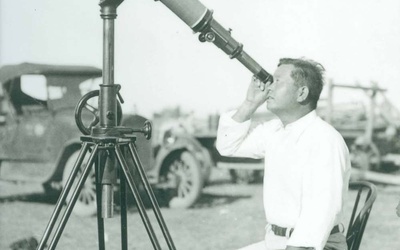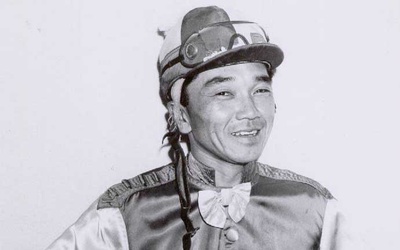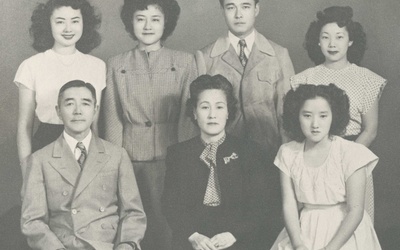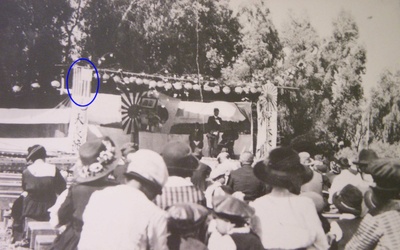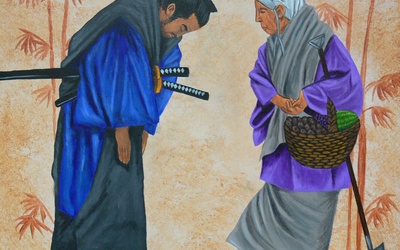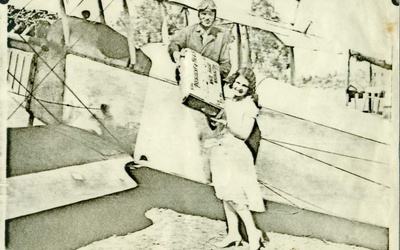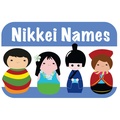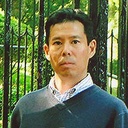
Tim Asamen
@TKATim Asamen is the coordinator of the Japanese American Gallery, a permanent exhibit in the Imperial Valley Pioneers Museum. His grandparents, Zentaro and Eda Asamen, emigrated from Kami Ijuin-mura, Kagoshima Prefecture, in 1919 and settled in Westmorland, California, where Tim resides. He joined the Kagoshima Heritage Club in 1994, serving as president (1999-2002) and as the club's newsletter editor (2001-2011).
Updated August 2013
Stories from This Author
Masani Nagata: The Farmer Who Discovered a Comet
July 26, 2021 • Tim Asamen
By July of 1931 the melon season was winding down in Southern California’s Imperial Valley. With fewer runners from the local produce companies wiring eastern wholesale markets, the Western Union telegraph office in the farming town of Brawley would reduce its business hours as it did each year when the harvest came to an end. But in the middle of the month a flurry of incoming telegrams caused quite a stir. The wires came from unheard-of sources—astronomical observatories across the …
George Taniguchi: The Nisei Who Took Horse Racing by Storm - Part 2
Aug. 11, 2020 • Tim Asamen
Read Part 1 >> A wall in George’s home is adorned with three large, framed collages, each one highlighting a milestone race in his career: his first win, his biggest monetary win, and one race that made horse racing history. His very first race took place on March 8, 1954, at Bay Meadows in San Mateo. “I was pretty nervous on that. I tried to hide it but my hands were all wet.” His first mount was Radio Message and he …
George Taniguchi: The Nisei Who Took Horse Racing by Storm - Part 1
Aug. 10, 2020 • Tim Asamen
Strength is not just a tool for winning, it is necessary for survival. Jockey Johnny Longden was once rammed in midrace, knocked from his stirrups and sent flying downward in front of a pack of horses. He was saved by a jockey riding alongside him, George Taniguchi, who was so powerful that he was able to catch Longden with one hand…and righted him in the saddle, also with one hand. Incredibly, Longden won the race. The Daily Racing Form called …
The Issei Lexicon
June 20, 2017 • Tim Asamen
For years I wanted to compile a list of Japanese American words and phrases. I am beginning a list for this article with words that, for the most part, came down to us from the Issei generation. I am not talking about standard Japanese terms, such as shoyu (soy sauce) or urusai (irritatingly noisy), which most Nikkei say or understand, because they have the same meaning in Japan today. My focus is on words or expressions that have become uniquely …
Japanese American Name Culture - Part 2
May 12, 2017 • Tim Asamen
Read Part 1 >> Cultural Heritage and Assimilation The names that immigrant parents select for their American-born children say something about culture, customs, hopes, and dreams. In a previous article I wrote about the popularity of the name George for Nisei boys. Most of them were named after George Washington. But some of them were actually named after the reigning sovereign of Great Britain at the time of their birth, such as actor and activist George Takei who was named …
Japanese American Name Culture - Part 1
May 11, 2017 • Tim Asamen
Is it Eisenhauer or Eisenhower? Gonzalez or Gonzales? Yasuzo or Yasudo? Whether they are misspellings, attempts at assimilation, or expressions of individualism, the variations in the spelling of immigrant names make up a distinctive feature of the American experience. (By the way, that is why I am not keen on the idea of standardizing the spelling of Nikkei names – say, in accordance with the modified Hepburn system – for bibliographies and even library and archival collections.) Nikkei name culture …
Coming to Terms with Tenchosetsu
April 10, 2017 • Tim Asamen
On the front page of the English section of the December 24, 2016, issue of The Rafu Shimpo, there was a small photograph of the emperor and empress of Japan. The caption read in part, “Emperor Akihito, accompanied by his wife Empress Michiko, waves to the crowd at the Imperial Palace in Tokyo on December 23, his 83rd birthday.” The Japanese American daily newspaper still deems the emperor’s birthday as newsworthy. Until 1948 the reigning emperor’s birthday was a national …
What Made Them Such Good Farmers?
March 7, 2017 • Tim Asamen
During the early days of agricultural development in California’s Imperial Valley, most of the cotton farmers hailed from Texas and other southern states. They grew cotton as an annual crop. That is, the crop was planted and nurtured only until the cotton was picked. Then the bare stalks were plowed under and a new crop was planted the following season. In 1909 a prominent local pioneer named Ira Aten boasted that he discovered through experimentation that when the stalks were …
Inaka: Moving from Scorn to Pride
Feb. 10, 2017 • Tim Asamen
I sometimes refer to the Imperial Valley as my little inaka corner of the world. Literally translated, inaka (田舎) means “the countryside” or “one’s native village.” And in adjectival form, it means “rural,” “rustic,” or “provincial.” The Imperial Valley is definitely that; it is farm country in California’s southern desert bordering Mexico and Arizona. Approximately two hundred miles southeast of Los Angeles and one hundred twenty miles due east of San Diego, it is undeniably out in the boondocks. The …
Come Out First – Imperial Valley’s Winter Harvest
Jan. 10, 2017 • Tim Asamen
To create the farming oasis called the Imperial Valley, in 1901 water from the Colorado River was diverted to the middle of the desert that stretches across Imperial County in the southeastern corner of California. The region is notorious for its scorching summer heat; the temperature exceeds 100 degrees Fahrenheit for more than 100 consecutive days. For a few days during the month of July, it is not uncommon for the afternoon highs to reach at least 120 degrees. But …

